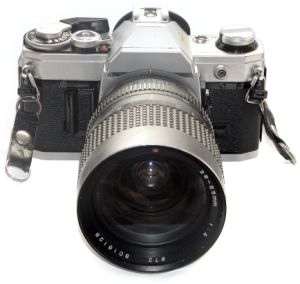 Looking to take better photos? if your camera supports it then the natural step up is to shoot everything in the RAW format. Whereas when your camera saves a picture as a JPEG, it adjusts the settings automatically, photos taken in RAW will include all the information, which you can adjust later.
Looking to take better photos? if your camera supports it then the natural step up is to shoot everything in the RAW format. Whereas when your camera saves a picture as a JPEG, it adjusts the settings automatically, photos taken in RAW will include all the information, which you can adjust later.
To make it simple, a JPEG is like a print from the photo shop, while RAW is the negative. You then decide how the picture looks.
A photo taken in RAW may not look spectacular in your camera’s preview, but once you’ve edited it, adjusted contrast and light, removed noise and dust and cleaned out unnecessary detail, you’ll come up with a much nicer image, and probably better than what you would have gotten if shot in JPEG.
To be able to work with RAW you need to make sure that your camera supports it and that your memory card is large enough. RAW is much bigger than JPEG simply because it stores all the data, not just what the camera considers relevant. To edit in RAW you’ll need to have the right software. This is where we come in.
If you’re serious about photography and are looking for a full fledged image editor that handles RAW, whilst offering powerful organization and publishing tools, then you have to go for either Adobe Lightroom or Apple Aperture. Both are excellent choices and although true fans will have their reasons why one is much better than the other, you really have to test both out to see which one you prefer.
You can also find a number of smaller good Mac applications for RAW editing. Raw Photo Processor lets you add small adjustments to your RAW images before converting them to JPEG. All the essential image values can be adjusted with sliders. RAW Developer is another simple editor with color adjustment and processing tools. It handles over 100 camera models. Not limited to the RAW format, the nifty MagicBrush-Photo will let you add effects and layers to your pictures and carries eight different brushes. Capture One PRO offers batch editing capabilities, great for getting through a large number of RAW files at once. Last but not least is DxO Optics Pro, an excellent image enhancer which covers a wide range of camera models and has powerful optimization features.
On a side note, almost every manufacturer, and every new camera model that comes out has it’s own RAW format, which is not always supported by all RAW editing applications. Make sure that yours is before installing a new software. Bigger applications like Adobe Lightroom or Apple Aperture get regular updates that normally cover all new models, but it’s not guaranteed that small programs will.

